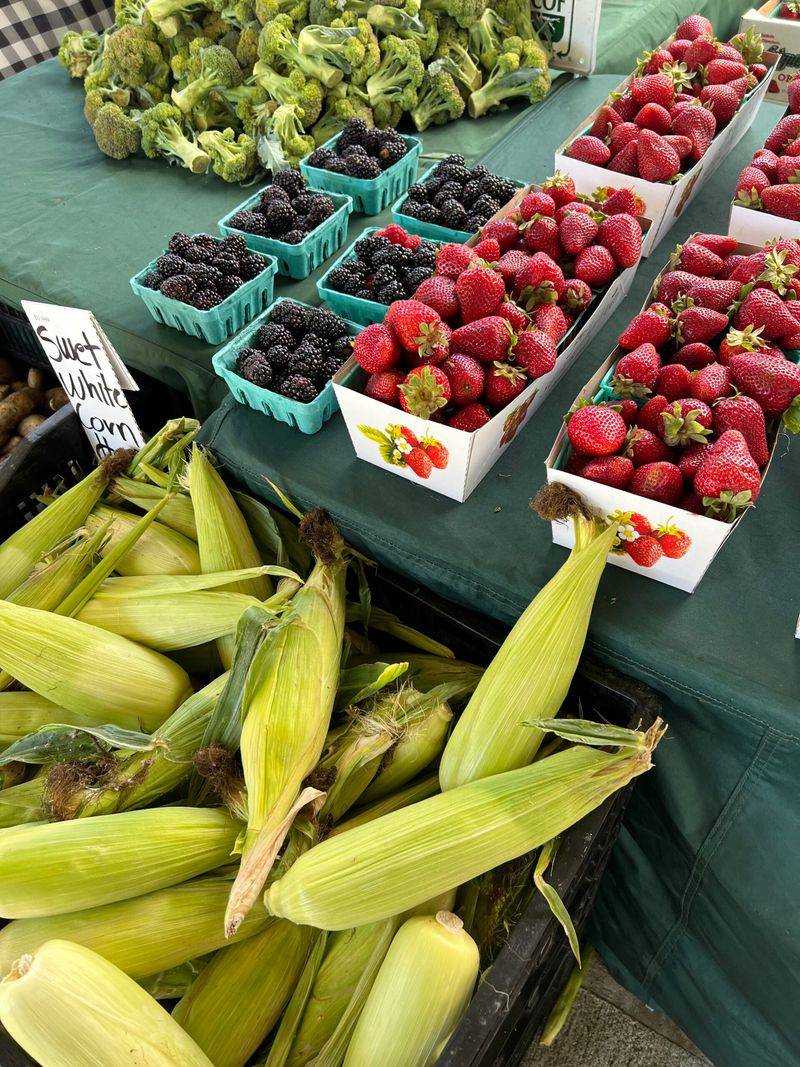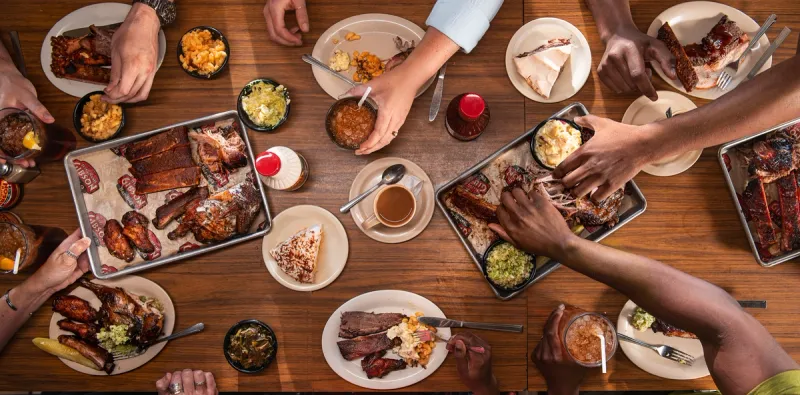The U.S. States With The Healthiest And Unhealthiest Diets

Exploring the top five states known for their healthy eating habits and the five states struggling with unhealthy diets provides valuable insights into the dietary landscapes across the United States. The states with healthier diets often benefit from access to fresh produce, proactive health programs, and a cultural inclination towards balanced eating. In contrast, states with unhealthier diets face challenges such as food deserts, cultural preferences for rich, high-calorie foods, and limited access to healthy options. This list highlights these contrasts, offering a snapshot of the diverse dietary patterns found within the U.S.
1. California

California is practically synonymous with healthy eating. Imagine strolling through a bustling farmers market, where vibrant avocados, leafy greens, and acai bowls abound. The state’s wellness culture is deeply ingrained, with health food stores and plant-based options on every corner.
Whether you’re in Los Angeles or San Francisco, the emphasis is on fresh, locally sourced ingredients. This focus on wholesome foods supports an active lifestyle, contributing to California’s reputation as a haven for the health-conscious.
Paradoxically, the Golden State also embraces culinary innovation, often blending traditional and modern approaches to create unique, nutritious meals.
2. Hawaii

In Hawaii, the island lifestyle extends to the plate, where fresh seafood and tropical fruits are staples. Picture a serene beach picnic with dishes rich in omega-3s and fiber, low in processed elements.
The Hawaiian diet is not just about food; it reflects a cultural ethos of moderation and respect for nature’s bounty. From papayas to freshly caught fish, the focus is on balance and nutrient-rich foods.
This island’s culinary tradition offers not just sustenance but a way of life, emphasizing harmony and health, even in the midst of its vibrant, diverse flavors.
3. Colorado

Colorado’s majestic landscapes inspire more than just outdoor adventures; they cultivate a culture of health-conscious eating. In cities like Boulder and Denver, diets frequently feature fresh veggies, lean proteins, and whole grains.
This state is a haven for fitness enthusiasts, where meals often mirror active, outdoor lifestyles. A typical day might include a hike followed by a wholesome meal, loaded with nutrients to refuel the body.
Colorado’s commitment to health extends beyond personal habits, becoming a shared community value that prioritizes well-being and vitality.
4. Vermont

Vermont’s charm is as much about its landscapes as its culinary traditions. Known for a strong farm-to-table culture, Vermont’s meals are reflections of its lush, seasonal bounty.
Residents enjoy lower rates of fast food consumption, opting instead for whole, fresh foods. The state’s commitment to local produce means that dishes often feature ingredients sourced directly from nearby farms.
This emphasis on quality and sustainability not only boosts health but also fosters a deep connection between the land and its people, making eating an experience of gratitude and community.
5. Massachusetts

Massachusetts leads with its robust public health programs and high levels of health education, creating an environment where balanced meals are the norm. Imagine a community seminar where nutrition is keenly discussed, reflecting the state’s proactive approach.
Here, residents are more likely to limit sugary beverages and processed foods, focusing instead on diverse, nutrient-rich meals. This educated approach to dieting enables Massachusetts to maintain a healthier populace.
The state’s commitment to dietary education underscores its larger goal of fostering long-term wellness and a higher quality of life for its residents.
6. Mississippi

Mississippi offers a culinary experience rich in flavor but often heavy in calories. The state is famous for its Southern comfort food, with fried chicken, buttery biscuits, and sweet tea taking center stage.
These dishes, while delicious, contribute to high rates of obesity and diabetes, reflecting a cultural preference for hearty, indulgent meals. Despite these challenges, there is a growing movement towards healthier options, aiming to balance tradition with nutritional needs.
Mississippi’s culinary landscape is a testament to its heritage, where food serves as a shared experience, deeply rooted in local tradition.
7. West Virginia

In the heart of Appalachia, West Virginia grapples with dietary challenges, largely due to its geographic and economic landscape. Many communities face issues like food deserts, where fresh produce is scarce.
Instead, diets often rely on processed meats, sugary drinks, and refined carbs, leading to health concerns. Local stores might prominently feature these items, reflecting broader accessibility issues in the state.
Despite these hurdles, initiatives aimed at increasing produce accessibility are slowly gaining ground, working to shift dietary habits towards more balanced, nutritious options.
8. Alabama

Alabama’s culinary scene is a delight for the senses, rooted in rich traditions and flavors. Picture a barbecue gathering with fried chicken, biscuits, and sweet tea, representing the state’s love for hearty, flavorful meals.
However, these foods are often high in saturated fat and sodium, contributing to health challenges like obesity. Despite this, the state’s food culture remains an integral part of its identity, celebrated for its warmth and hospitality.
Efforts to introduce healthier alternatives are emerging, aiming to preserve tradition while promoting better health outcomes.
9. Louisiana

Louisiana’s Cajun and Creole cuisine is a feast for the senses, celebrated worldwide for its bold flavors. In cities like New Orleans, you’ll find dishes like gumbo and jambalaya, rich in spices and often deep-fried.
Though delicious, these meals are typically high in butter and salt, posing dietary challenges. Vegetables, when served, are often breaded and accompanied by rich gravies.
Despite these indulgences, there’s a growing awareness and push towards integrating healthier ingredients into traditional recipes, seeking to balance taste with nutritional value.
10. Arkansas

Arkansas faces significant dietary challenges, particularly in its rural areas where access to fresh produce is limited. In many small towns, grocery stores often stock more processed foods than fresh options.
This reliance on processed goods correlates with high obesity and heart disease rates, underlying the state’s health struggles. However, initiatives aimed at improving access to healthy foods are underway, slowly transforming the dietary landscape.
Arkansas’s journey towards healthier eating is ongoing, marked by efforts to bridge the gap between tradition and modern nutrition.
